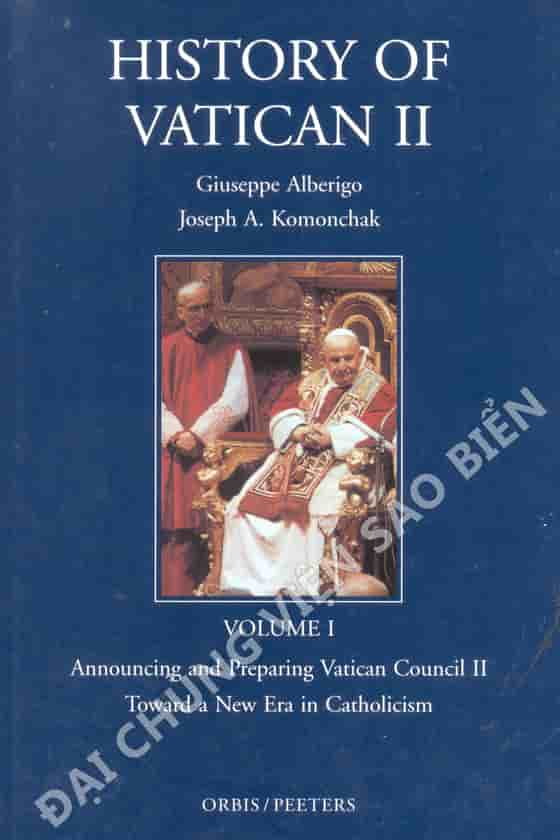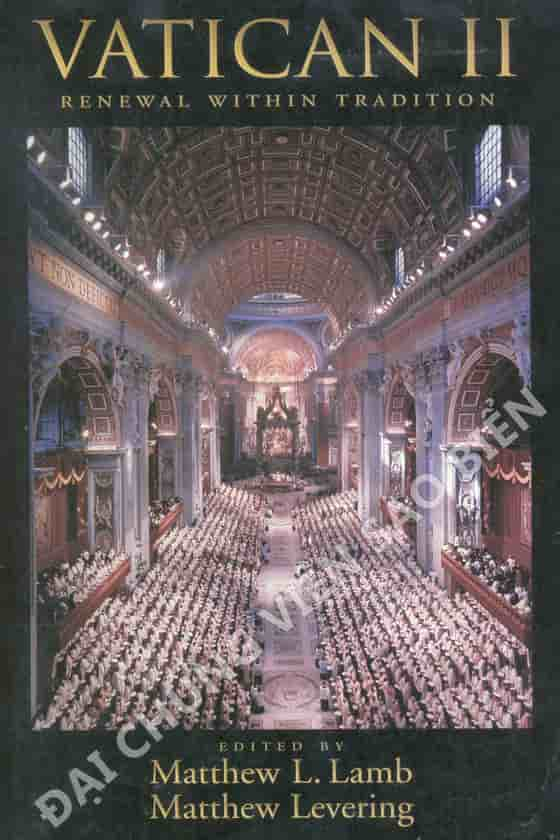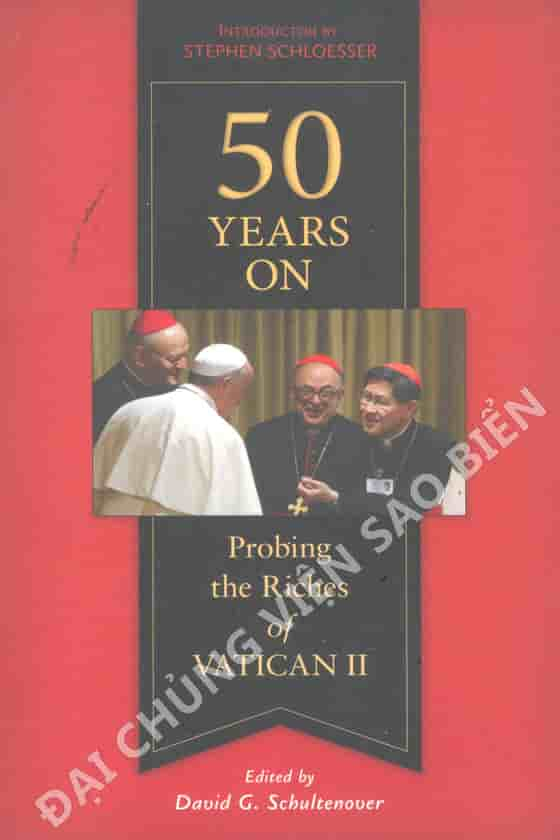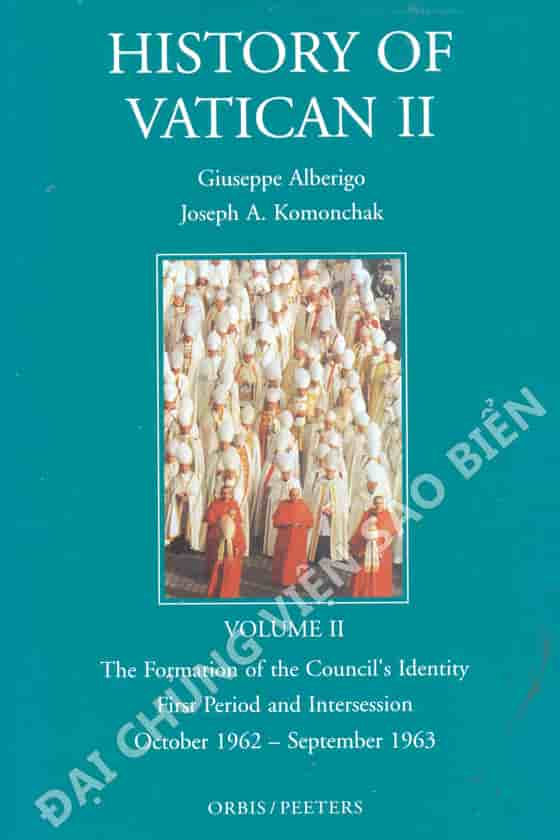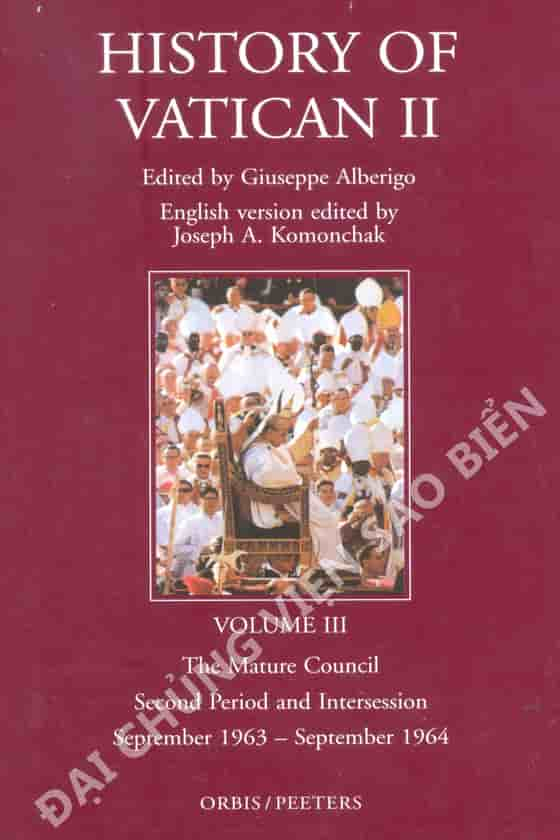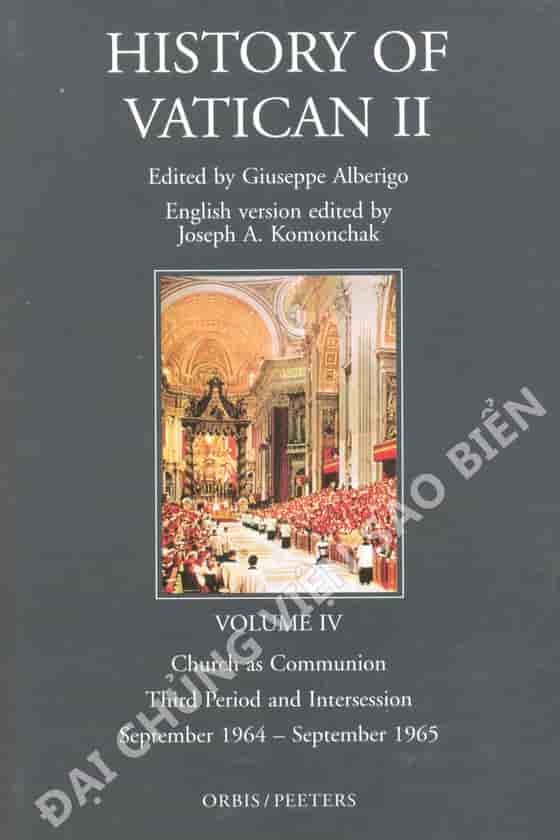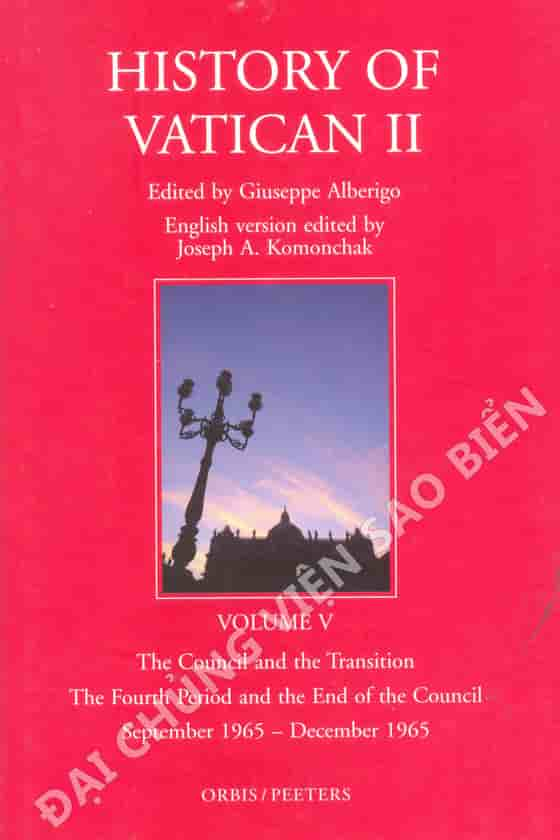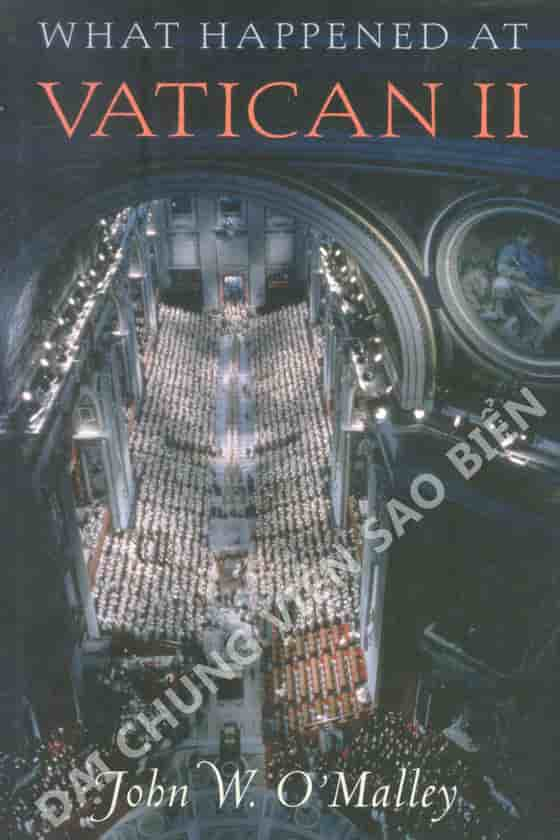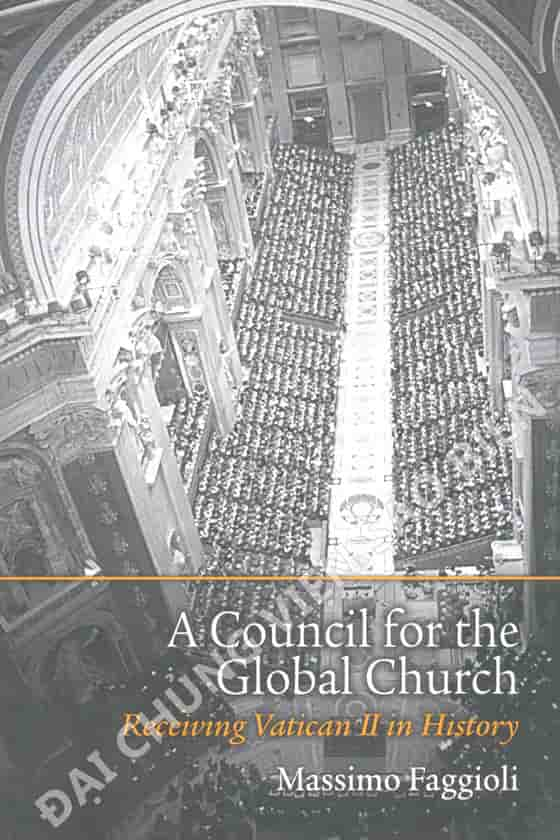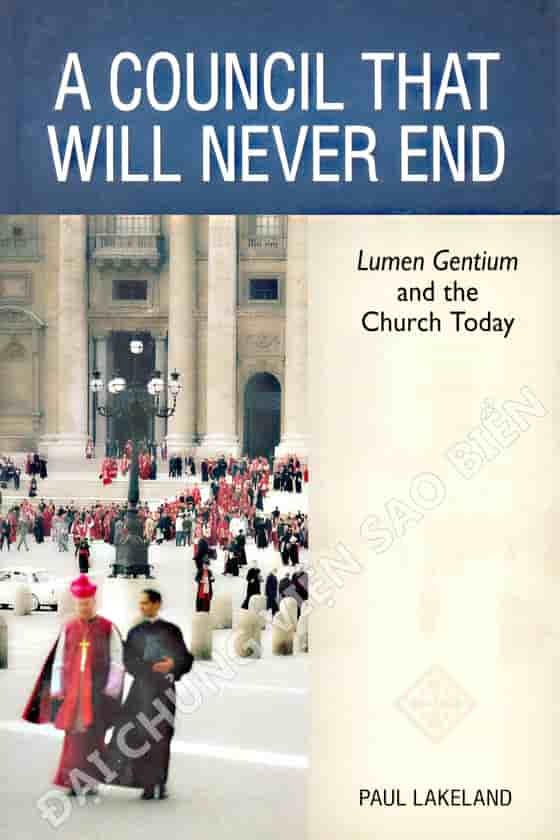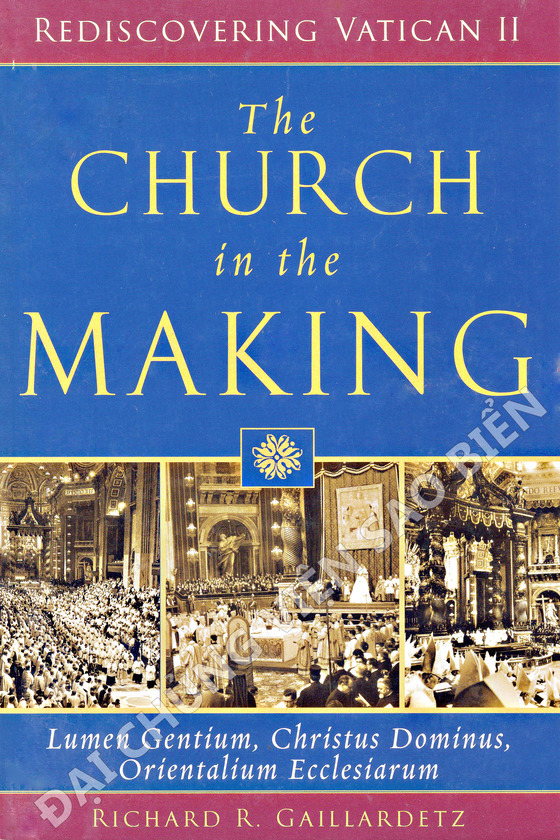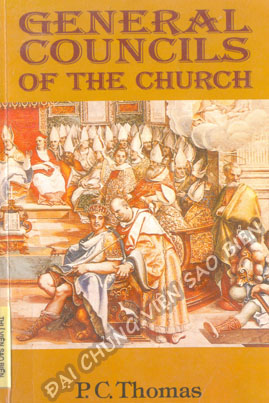| THE ANNOUNCEMENT OF THE COUNGIL: FROM THE SECURITY OF THE FORTRESS TO THE LURE OF THE QUEST |
|
| I. “A Gesture of Serene Boldness” |
1 |
| 1. January 25, 1959 |
1 |
| 2. Why a council? |
6 |
| 3. The Announcement of Earlier Councils |
16 |
| II. Echoes, Hopes, Concerns |
18 |
| 1. Catholic Circles |
19 |
| 2. Noncatholic Christians |
26 |
| 3. Diplomatic Intelligence and Comments in the Press. |
30 |
| III. Determining the Character of the Council |
33 |
| IV. Establishment of the Antepreparatory Commission |
44 |
| V. John XXIII Decides on the Name Vatican II |
50 |
| THE ANTEPREPARATORY PHASE: THE SLOW EMERGENCE FROM INERTIA (OANUARY, 1959 OCTOBER, 1962) |
|
| I. Vatican II An Isolated Event? |
55 |
| II. A Church Ready for a Council? |
60 |
| 1. Survival of a Conciliar tradition? |
60 |
| 2. The Catholic Church at the End of the 1950s |
72 |
| 2a. The Roman Model |
73 |
| 2b. A Certain Discontent |
81 |
| III. Roman Consultations |
91 |
| IV. The Responses |
97 |
| 1. How to Use the Vota |
98 |
| 2. three Sets of Attitudes |
109 |
| 2a. Capping Four Centuries Of Intransigence |
111 |
| 2b. Toward Vatican II |
118 |
| 2c. Contrasts and Uncertainties |
126 |
| V. From Contempt to Cooptation |
132 |
| 1. Between Indifference and Distrust: The Roman Vota |
133 |
| 2. Roman Theology Confronts the Council |
136 |
| 3. The Work on the Vota |
140 |
| 4. The Reaction of the Curial Congregations |
149 |
| 5. Toward the Preparation Proper |
153 |
| THE STRUGGLE FOR THE COUNGIL DURING THE PREPARATION OF VATICAN II |
|
| Introduction: The Papal Vision of the Counci |
167 |
| I. The Organization of the Preparatory Work |
171 |
| A. General Organization |
171 |
| B. Internal Organization and Methods |
176 |
| 1. Distibutnon of Roles |
176 |
| 2. Secrecy |
177 |
| 3. The absence of the laity |
178 |
| II. Preparing a “Pastoral” Council |
179 |
| A. The Reform of Pastoral Practice |
179 |
| 1. Commrission on Bishops and the Governance of Dioceses |
179 |
| 2. Commssion for the Discipline of the Clergy and the Christian people |
184 |
| 3. Commission for Religious |
185 |
| 4. Commtission for the Discipline of the Sacraments |
187 |
| 5. Commtission for Studies and Seminaries |
189 |
| 6. Commission on Missions |
192 |
| 7. Commission on the Apostolate of the Laity |
196 |
| 8. Commtssion for the Oriental Churches |
200 |
| 9. Secretariat for Communications Media |
205 |
| B. The Liturgical Commission |
206 |
| C. The Question of Languages |
211 |
| 1. The Language of the Council |
211 |
| 2. Languages In Clerical Studies |
213 |
| 3. Languages in the Liturgy |
214 |
| III. Preparing a "Doctrinal" Council |
227 |
| A. The Preparatory Theological Commission |
227 |
| 1. Agenda and Orientation |
227 |
| 2. Nomms and Methods |
234 |
| B. The Texts Produced by the Theological Commission |
236 |
| 1. A New Formula for the Profession of Fath |
237 |
| 2. De deposito fidel pure custodiendo |
240 |
| 3. Deordine morali |
246 |
| 4. De castitate, matrimonio, familia, virginitate |
251 |
| 5. De Beata Virgine Maria |
257 |
| 6. De ordine sociali and De communitate gentium |
260 |
| C. The Secretariat for Promoting Chrisuan Unity. |
263 |
| 1. Membership |
263 |
| 2. Competency and Topics. |
263 |
| 3. Method |
266 |
| 4. The Texts of the SCU |
267 |
| D. Doctrine and Dialogue |
272 |
| 1. The Word of God |
272 |
| 2. The Church |
285 |
| IV. The Review And Amendment of the Preparatory Texts |
300 |
| A. The CPC discussion of the text |
301 |
| B. The Subcommission on Amendments |
305 |
| 1. The TC's Schema De fontibus revelationis |
306 |
| 2. The TC`'s Schema De deposito fidel |
308 |
| 3. The TC`s Schema De Ecclesia |
311 |
| 4. The LI's Schema De sacra Liurgia. |
313 |
| V. The Ecumenical Presence at the Council |
318 |
| A. Establishing the Primeiple |
318 |
| B. Extending the Invitations |
323 |
| VI. Determining the Rules for the Council |
326 |
| A. The Preparation of the Rules |
329 |
| B. Major Features of the Conciliar Rules |
330 |
| C. Observations |
333 |
| VII. The Date, Duration and Agenda of the Council |
335 |
| A. The Date of the Council's Opening |
335 |
| B. The Anticipated Duration ofthe Council |
336 |
| C. Determining a Plan and Agenda for the Council |
339 |
| VIII. Pope John and the Preparation of the Council |
350 |
| THE EXTERNAL CLIMATE J.O. BEozzo] |
|
| I. Public Information about the Work of Preparation |
357 |
| 1. Expcctations Regarding News |
357 |
| 2. The Press Office of the Central Commission |
360 |
| 3. Spontaneous Initiatives |
363 |
| II. Information and Spontaneous Discussions |
364 |
| 1. “Religion” Reporters |
365 |
| 2. Theological Discussion and the Periodicals |
368 |
| 3. The Circulation of Books: Unity, Reform, Episcopate |
372 |
| III. Preparation for the council by the episcopates |
377 |
| IV. The Ordinary life of the Church |
380 |
| 1. The New Style of John XXIII |
381 |
| 2. Tensions in Ordinary Government |
383 |
| 3. The College of Cardinals and Episcopal Appointments |
384 |
| 4. The Roman Synod |
385 |
| 5. The International Eucharistic Congress in Munich |
387 |
| 6. The New Delhi Assembly of the World Council of Churches |
387 |
| V. Echoes in Other Religious and Ideological Spheres |
388 |
| 1. The Attitude of the Muslim World |
388 |
| 2. Catholics and the Muslim World |
389 |
| 3. The Attitude of the Jewish World: Judaism, an Unexpected Theme |
392 |
| 4. John XXIII and the Jews |
393 |
| 5. The Initiatives of Jules ISaac |
395 |
| 6. The Political Horizon of the Debate |
397 |
| 7. The Attitude of the Marxist Archipelago |
398 |
| 8. Bishops and Observers from the East |
402 |
| 9. The Russian Observers |
403 |
| V. ON THE EVE OF THE SECOND VATICAN COUNCIL |
|
| I. The First Seven Schemata and the Reactions of the Episcopate |
405 |
| 1. The General Attitude of Expectation before the Council |
405 |
| 2. The Sending of the Seven Schemata |
410 |
| 3. The Reactions of the Bishops |
419 |
| II. Pope John XXIII during the Final Period before the Opening of the Council |
429 |
| 1. Various Statements and Audiences |
429 |
| 2. The Radio Message of September 11, 1962 |
435 |
| 3. Spiritual Preparation |
442 |
| 4. The Pope and Organizational Preparations |
446 |
| III. The Appointment of the Experts |
448 |
| 1. Task and Importance of the Experts |
448 |
| 2. The Appointment of the Experts on September 28, 1962 |
449 |
| 3. Experts in a Renewal of Theology |
451 |
| IV. Communications and Organization of the Press |
462 |
| 1. Vatican Press Policy: Between Openness and Secrecy |
462 |
| 2. Organization of the Work of the Press |
466 |
| 3. International press Reportage |
470 |
| V. The Council Hall and it Service |
479 |
| 1. Planning phase and tasks |
479 |
| 2. The council Hall |
481 |
| 3. Technical Equipment |
483 |
| 3.1 Electric Lighting |
483 |
| 3.2 Microphones |
484 |
| 3.3 Tape Recording |
484 |
| 3.4 Television Equipment |
485 |
| 3.5 5 Telephones |
485 |
| 3.6 Data Phoeesging |
486 |
| 4. Services |
489 |
| 4.1 Health Sevices |
489 |
| 4.2 Catering |
490 |
| 4.3 Sanitary Facilities |
490 |
| 4.4 Security and Order |
491 |
| VI. The Arrival Of the Fathers in Rome |
492 |
| 1. The Arrival of the Fathers |
492 |
| 2. The Housing of the Fathers |
495 |
| 3. Finances |
497 |
| 4. Contacs among the Fathers in Rome |
499 |
| CONCLUSION: PREPARING FOR WHAT KIND Of COUNCIL |
501 |
